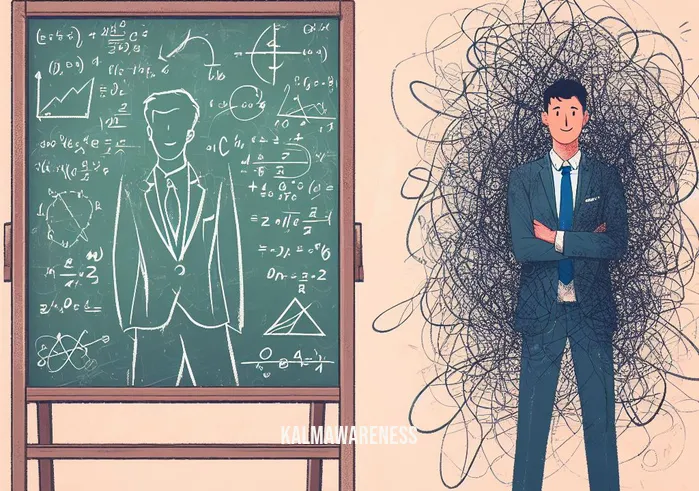Exploring the Art of Relaxation: A Journey Through Health and Well-being
In our fast-paced world, finding moments of tranquility can seem like a distant dream. Yet, the pursuit of relaxation is more than a fleeting desire; it’s a vital component of our overall health and well-being. This exploration into the world of relaxation isn’t just about unwinding. It’s about discovering the profound impact that peace and calm can have on our lives. In this series, we delve deep into various techniques and philosophies that embody the essence of relaxation. Our journey begins with an understanding of the fundamental words for relaxed and their significance in our daily lives.
The Essence of Relaxation: Understanding its Impact
Relaxation is often misconstrued as mere inactivity or laziness. However, it’s much more nuanced. Relaxation is a state of being, a quality of mind and body that fosters health, happiness, and productivity. Engaging in activities that lead to relaxation can significantly reduce stress, enhance mood, and even boost cognitive abilities. For instance, the practice of mindful movement before sleep is not just a physical exercise; it’s a ritual that prepares the mind and body for restorative sleep.
The Role of Meditation and Mindfulness
Central to the concept of relaxation is meditation. Meditation has evolved from a spiritual practice to a mainstream stress-relief technique. Techniques like EMDR meditation and mindful hypnobirthing are more than just trends; they are transformative practices that align the mind and body, leading to profound relaxation and clarity. But meditation isn’t a one-size-fits-all solution. Understanding the element of some meditation exercises helps in choosing the right method that resonates with your individual needs.
The Power of Words and Thoughts
The phrase “pretty soon” meaning in the context of relaxation is about setting intentions and being patient with the process. Relaxation is not instantaneous; it’s a journey. Similarly, understanding phrases like “keep in mind” definition helps us to focus on the importance of maintaining a relaxed state of mind amidst daily challenges.
Physical Dimensions of Relaxation
Relaxation is not just a mental state; it’s physically embodied as well. Techniques like touching certain body parts for relaxation or teenagers walking for mental clarity are examples of how physical actions can lead to a relaxed state. These methods show how engaging the body can calm the mind, proving that relaxation is a holistic experience.
Yoga: A Union of Mind and Body
Yoga is a perfect example of this union. Rouse Yoga not only tones the body but also calms the mind, making it an essential practice for those seeking relaxation. It’s a discipline that teaches us to be present and at peace, regardless of external circumstances.
Meditation: A Deeper Dive
Understanding meditation in-depth is crucial for harnessing its benefits. Clearing energy meditation, for instance, is not just about sitting in silence; it’s about actively clearing mental clutter to achieve a state of peace. Similarly, questions like can you meditate lying down address common misconceptions and provide practical guidance on meditation practices.
Meditation for Beginners
For those new to meditation, resources like Jack Kornfield meditation for beginners offer an accessible starting point. Understanding that meditation is made simple can encourage more people to embark on this relaxing journey.
Sustainable Self-Care and Relaxation
Relaxation should be sustainable and integrated into daily life. Concepts like sustainable self-care emphasize the importance of regular, mindful practices that contribute to long-term well-being.
The Science Behind Relaxation
Understanding the science, such as the 256 Hz benefits, helps in appreciating how relaxation techniques like sound therapy work. Similarly, exploring concepts like how we get deep so fast provides insights into the efficiency of various relaxation methods.
Towards a Peaceful Mind and Body
Relaxation is an art that involves various practices, from meditation to physical activities, and understanding the power of our thoughts and words. It’s about creating a harmonious balance between the mind and body, leading to a state where thoughts are not occupied by worry and where we can be peaceful. This balance is essential for not just temporary relief but for a sustained, fulfilling life.
As we conclude this first segment, we have touched upon various facets of relaxation and its profound impact on our well-being. But this is just the beginning. In the next chapter, we will delve deeper into specific relaxation techniques and how they can be integrated into different aspects of our daily lives. Stay with us on this journey to discover how to bring peace and tranquility into every moment of your life.

The Symphony of Serenity: Deciphering Words for Relaxed Living
In the realm of relaxation, words carry immense power. They shape our thoughts, influence our emotions, and can guide us towards a more serene state of being. This chapter delves deeper into the lexicon of relaxation, uncovering the nuances and variations of ‘words for relaxed.’ By expanding our vocabulary in this realm, we equip ourselves with a more profound ability to articulate and attain a peaceful state of mind.
The Language of Calm: Synonyms for Relaxation
Relaxation is a multi-faceted experience, and its essence can be captured in various words. Each synonym not only offers a different shade of meaning but also opens a new path to achieving tranquility.
- Serenity: Implies a deep, unshakable peace, often connected with nature or meditation.
- Tranquility: Suggests a calmness that is both internal and external, a harmony with the world.
- Repose: Highlights the aspect of restfulness and recovery.
- Calmness: Focuses on the absence of agitation or excitement, promoting mental clarity.
- Ease: Encompasses comfort and freedom from difficulty or effort.
The Impact of Words on Well-being
Words do more than define our experiences; they shape them. When we consciously use words like ‘serenity’ or ‘tranquility,’ we’re not just describing a state of mind; we’re invoking it. This linguistic approach to relaxation is a cornerstone of practices like positive affirmation meditation and mindful hypnobirthing, where language is a tool for transformation.
A Table of Tranquility: Words and Their Meanings
To further understand how different words for relaxation interconnect and their specific connotations, let’s explore a detailed table:
| Word | Meaning | Context in Relaxation |
|---|---|---|
| Serenity | The state of being calm, peaceful, and untroubled | Ideal for meditation and nature-based relaxation |
| Tranquility | Quality or state of being tranquil; calm | Suited for yoga, reading, and quiet contemplation |
| Repose | A state of rest, sleep, or tranquility | Often used in context with deep relaxation and sleep therapies |
| Calmness | The state or quality of being free from agitation or strong emotion | Key in stress management and mindfulness practices |
| Ease | Absence of difficulty or effort; comfort | Relevant in leisure activities and hobbies that relax |
This table not only expands our vocabulary but also guides us in choosing the right words to describe and enhance our relaxation practices.
Expanding Relaxation Techniques
Understanding these words for relaxed living paves the way to exploring techniques that embody these qualities. For example, practices like meditation for sleep foster ‘repose,’ while activities such as mindful cooking can be an exercise in ‘ease.’
Beyond Words: The Practice of Relaxation
While understanding the words for relaxation is vital, practicing them is equally important. Let’s explore some activities that embody these relaxation synonyms:
- Practicing Serenity: Engage in activities like mindful gardening or listen to calming music.
- Seeking Tranquility: Try gentle yoga or take a quiet walk in nature.
- Embracing Repose: Participate in guided sleep meditations or create a restful sleeping environment.
- Cultivating Calmness: Learn breathing exercises for anxiety or practice daily mindfulness.
- Finding Ease: Indulge in hobbies like knitting for relaxation or read a light-hearted book.
Each of these activities not only provides relaxation but also deepens our understanding of what it means to live a relaxed life.
As we conclude this chapter, we’ve expanded our understanding of ‘words for relaxed’ and how they intertwine with our daily practices. The power of language in shaping our journey towards tranquility cannot be overstated. However, words are just the beginning. In the next chapter, we will explore how to incorporate these concepts into our daily routines, transforming our understanding into action. Join us as we continue to navigate the serene waters of relaxation and well-being, discovering practical ways to integrate these principles into the fabric of our daily lives.

Harnessing Hope: The Power of Relaxed Words in Inspiring Lives
In our journey through the realms of relaxation and well-being, we now turn to the potent role of inspiration. Words for relaxed aren’t just linguistic expressions; they are vessels of hope and motivation. This chapter explores how the right words can ignite a spark of inspiration, helping us navigate life’s challenges with a serene mindset.
The Inspirational Echo of Relaxed Words
Words have the unique ability to resonate deeply within us, offering comfort and encouragement. They can be a source of strength in times of turmoil and a guiding light towards a peaceful existence. Let’s delve into some powerful quotes that encapsulate the essence of relaxation and hope.
Quotes That Breathe Serenity
- “Serenity is not the absence of conflict, but the ability to cope with it.” – An Unknown Sage
- “In tranquility, the soul reflects the beauty of the cosmos.” – Plato
- “True repose is when the mind lies still as a serene lake, undisturbed by the winds of thought.” – A Zen Proverb
- “Amidst the chaos, find a moment of calmness; it’s the oasis of your soul.” – Rumi
- “Ease is a quiet dance through life’s gentle rhythm.” – Lao Tzu
Each quote, steeped in wisdom, reminds us of the transformative power of embracing a relaxed state of mind.
Real-Life Inspirations: Stories of Tranquility
Moving beyond quotes, real-life examples offer tangible inspiration. Let’s explore case studies that embody the power of relaxed words and serene living.
Case Study 1: The Gardener of Serenity
Meet Jane, a 58-year-old who found solace in mindful gardening. Diagnosed with anxiety, she turned to her garden. Amidst the plants, she found her ‘serenity’ — a peaceful escape that calmed her mind and soothed her soul.
Case Study 2: The Yoga Instructor’s Journey to Tranquility
David, a yoga instructor, embraced the practice of gentle yoga. Through yoga, he discovered ‘tranquility’ not just as a concept but as a lived experience, transforming his approach to life and teaching.
The Role of Relaxed Words in Everyday Life
Integrating words for relaxed into our daily vocabulary can profoundly impact our mindset and actions. These words become anchors, reminding us to pause, breathe, and embrace serenity, even in the midst of life’s hustle.
Integrating Serenity into Daily Routines
- Morning Meditation: Start the day with a peaceful meditation, focusing on serenity.
- Mindful Breaks: Incorporate moments of tranquility throughout the day, even during work.
- Evening Reflection: End the day by reflecting on moments of calmness and ease.
The Ripple Effect of Relaxation
The impact of embracing relaxed words extends beyond personal benefit. It creates a ripple effect, influencing our interactions with others and contributing to a more peaceful world.
Spreading Calmness and Ease
- Community Involvement: Participate in activities like community gardening to spread serenity.
- Teaching and Sharing: Share techniques like breathing exercises for anxiety to foster calmness in others.
Looking Ahead: Cultivating a Lifestyle of Relaxation
As we conclude this chapter, we see how words for relaxed are not just phrases but powerful tools for inspiring hope and fostering well-being. By internalizing these words and their meanings, we can transform our lives and the lives of those around us.
In the next chapter, we will explore practical strategies to cultivate a lifestyle of relaxation. We’ll delve into daily habits, routines, and practices that embody the essence of serenity, tranquility, and ease. Join us as we continue this journey, turning inspiration into action and words into a way of life.
@
Unraveling the Tapestry of Tranquility: A Closer Look at Words for Relaxed
In our continuous exploration of the serene landscape of relaxation, this chapter delves into a detailed analysis of ‘words for relaxed’ and their profound implications. Utilizing lists and bullet points, we aim to break down complex concepts into digestible insights, enriching our understanding of how these words shape our quest for tranquility.
The Spectrum of Relaxation: Words and Their Nuances
Relaxation, as a concept, encompasses a broad spectrum of experiences and emotions. Here, we dissect some key words and their distinct flavors of calm.
- Serenity:
- Signifies a deep, untroubled peace.
- Often associated with nature and spiritual experiences.
- Tranquility:
- Denotes a quiet, undisturbed state.
- Ideal for reflective practices like yoga nidra.
- Repose:
- Implies rest and relaxation.
- Linked to sleep health and restorative yoga practices.
- Calmness:
- Represents a state free from agitation.
- Essential in stress management techniques.
- Ease:
- Suggests comfort and effortlessness.
- Relates to leisure activities that promote relaxation.
Delving into the Essence of Each Word
To further understand these words, let’s break down their contextual applications and benefits:
Serenity in Daily Life
- Personal Space: Creating a serene environment at home with calming colors and minimal clutter.
- Mindful Practices: Engaging in activities like sound meditation to cultivate inner peace.
Embracing Tranquility
- Quiet Time: Allocating moments for silence and solitude.
- Nature Connection: Spending time outdoors to absorb the tranquility of nature.
Cultivating Repose
- Sleep Hygiene: Establishing routines for better sleep, such as using aromatherapy for relaxation.
- Relaxation Techniques: Incorporating practices like deep relaxation yoga for physical rest.
Finding Calmness
- Stress Management: Utilizing methods like mindful breathing exercises to maintain calmness under pressure.
- Emotional Regulation: Practicing emotional awareness and self-regulation techniques.
Seeking Ease
- Hobbies and Interests: Engaging in enjoyable activities that bring a sense of ease.
- Effortless Living: Simplifying life’s complexities to enhance ease and comfort.
The Interplay of Words and Wellness
The relationship between these words and our overall wellness is undeniable. Each term, with its unique connotation, contributes to a holistic approach to well-being.
- Mental Health: Words like ‘calmness’ and ‘serenity’ are integral in mental health practices.
- Physical Health: ‘Repose’ and ‘ease’ play crucial roles in physical recovery and health.
- Emotional Well-being: The pursuit of tranquility and calmness aids in emotional stability.
Anticipating the Journey Ahead
As we wrap up this chapter, our exploration into the world of relaxation and the words that define it becomes more profound. These words are not just vocabulary; they are tools for crafting a life of peace and contentment.
In the final chapter of our series, we will synthesize all that we have learned. We will provide practical steps to incorporate these concepts into our daily lives, making relaxation not just an aspiration but a lived reality. Join us as we conclude our journey, ready to transform words into a lifestyle of serene living.
@
The Journey to Serenity: Reflecting on Words for Relaxed Living
As we draw the curtains on our enlightening exploration of words for relaxed and their profound impact on our lives, it’s time to reflect on the insights gained and the serene path we’ve traversed. This final chapter is not just a conclusion; it’s an invitation to continue this journey of tranquility, armed with a richer vocabulary and a deeper understanding of relaxation.
Embracing the Essence of Relaxation
Throughout our journey, we’ve discovered that words like serenity, tranquility, repose, calmness, and ease are not mere synonyms; they are distinct colors in the palette of relaxation. Each term paints a unique aspect of relaxation, offering a varied spectrum of experiences:
- Serenity: A profound inner peace.
- Tranquility: A quiet, undisturbed state of mind.
- Repose: Restful relaxation, often physical.
- Calmness: A state of being free from agitation.
- Ease: Comfort and effortlessness in life.
Summarizing Our Insights
Let’s take a moment to reminisce about the key insights from our journey:
- The Power of Words: We learned how the right words can shape our thoughts and emotions, guiding us towards a more relaxed state of being.
- Diverse Techniques: From mindful breathing to restorative yoga, we explored various practices that embody the essence of these words.
- Real-Life Inspirations: We delved into stories and case studies, witnessing how individuals have harnessed these words to transform their lives.
- Practical Applications: We broke down these concepts into actionable steps, making relaxation an achievable goal in our daily routines.
A Call to Continued Exploration
Our journey doesn’t end here. I encourage you to revisit previous chapters, delve deeper into the practices we’ve discussed, and explore more content within our magazine. Remember, every step, every word, brings you closer to a more serene and balanced life.
Additional Resources
- For those seeking to deepen their meditation practice, explore advanced meditation techniques.
- If you’re interested in enhancing your physical well-being, consider trying yoga for flexibility and strength.
Gratitude and Anticipation
Thank you for joining me on this enlightening journey. Your time and engagement are deeply appreciated. As we conclude this series, rest assured that our magazine will continue to bring more insightful and helpful content in future editions.
The path to relaxation and well-being is ongoing, and words are powerful companions on this journey. Keep exploring, keep practicing, and remember: serenity, tranquility, repose, calmness, and ease are not just words; they are gateways to a more peaceful life.
As we part ways in this series, let’s carry forward the lessons learned and the calmness cultivated. I invite you to continue exploring, learning, and growing with us. Stay tuned for more content that guides, inspires, and empowers. Until then, may your journey be filled with serenity and joy.




